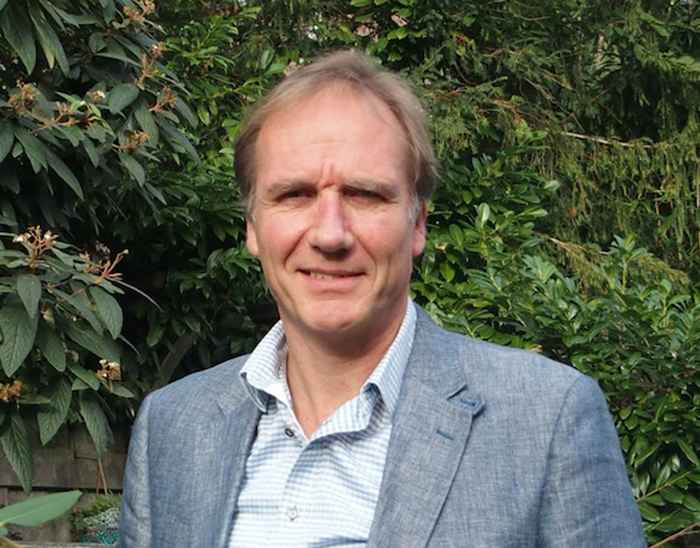Lex Kaper, professor of Observational Astrophysics and Instrument Development
1 April 2019

Together with his research group, astrophysicist Lex Kaper studies the formation, evolution and death of massive stars. He also focuses on gamma-ray bursts, the powerful cosmic explosions in which gamma radiation is released, using them to investigate the properties of distant - and therefore very young - galaxies. Spectroscopy plays an important role in Kaper's research. A lot can be deduced about the physical properties of objects in space using this technique. Kaper’s recent research led to the first spectroscopic identification of massive stars that are still surrounded by the disc that plays an important role during the formation process. He was also recently involved in the detection of the electromagnetic radiation emission made by the merger of two neutron stars. The gravitational radiation emitted during this event was recorded by the LIGO and Virgo detectors. The (spectroscopic) study of the electromagnetic counterpart led to the insight that the heaviest chemical elements (the lanthanides) in the universe are formed during these kinds of events.
Kaper is involved in the development of instruments for the European Southern Observatory (ESO) in Chile. He is the Principal Investigator for X-shooter, the world's most powerful spectrograph, which was mounted on the ESO Very Large Telescope in 2009. This instrument played a key role in his recent research into the formation of stars and gamma-ray bursts. In addition, he is the Principal Investigator on behalf of the Netherlands for MOSAIC, a consortium that is engaged in the development of a multi-object spectroscope for the ESO Extremely Large Telescope, ‘the biggest eye on the sky’, which is expected to become operational in 2025.
With help from Master's students, PhD candidates and post-docs, Kaper will, in the coming years, continue his research into the formation process, the evolution and the spectacular end of the most massive stars. The construction of the ELT/MOSAIC instrument will commence in 2020; both the telescope and the instrument are of unprecedented size (the dome of the ELT will be larger than the Amsterdam Arena) and will be built at an elevation of 3,060 metres atop the Cerro Amazones mountain in the Atacama desert in Chile. Following his recent appointment as vice-dean, Kaper will guide the process designed to lead to an even more powerful educational organisation within the Faculty of Science and to the development of the new, more technically oriented Science & Design degree programme.
In addition to being a dedicated researcher, Kaper is a keen lecturer. He teaches courses including Astrophysics in the second year of the Physics and Astronomy Bachelor's programme, and gives lectures as part of the Turning Points course in the Natural and Social Sciences Bachelor's programme. He is also the coordinator of the Observation Project, in which students in the Physics & Astronomy Master's programme conduct observations at the observatory on La Palma, one of the Canary Islands.
About Lex Kaper
Kaper studied astronomy at the University of Amsterdam (1989). After obtaining his PhD (cum laude) at the UvA in 1993 for the dissertation Wind Variability in Early-Type Stars, Kaper moved to Germany to work as a research fellow at the European Southern Observatory headquarters in Garching near Munich. He returned to the UvA's Anton Pannekoek Institute in 1998 with a Royal Academy fellowship. He then became successively assistant professor and associate professor at the UvA. He also served as chair of the Programme Committee for the Physics and Astronomy Bachelor's programme at the UvA for almost a decade. From 2005 onward, Kaper has also been professor by special appointment of Education in Astronomy at VU Amsterdam.
Kaper is widely published in peer reviewed journals including Astrophysical Journal, Physics Review Letters, Astronomy & Astrophysics and Nature. He is secretary of the National Committee for Astronomy and a member of the council of the European Astronomical Society.